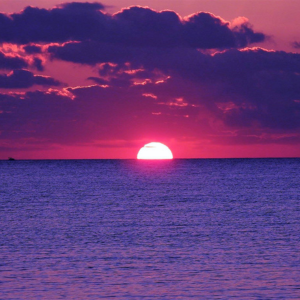 2 / 5 Stars
2 / 5 Stars‘The Bridge’ was published in hard cover in 1973; this Signet paperback (192 pp) appeared in 1974. It has a luminous green-yellow cover painting (the artist is unfortunately uncredited), a somewhat unusual color scheme (at the time, and even today, paperback marketing personnel consider green to be a ‘slow-selling’ color).
The novel opens with a Prologue set in a near-future USA, with a large armada of people driving dilapidated automobiles to a large religious festival in the New York City region called the ‘Feast of the Eater’. The Feast celebrates a rather eccentric religious doctrine founded by one Dominick Priest, who lived nearly a hundred years ago. It is apparent that the nation is recovering from something called the ‘Age of Ecology’, in which technology and civilization were stymied, if not outlawed. Priest appears to have been instrumental in the downfall of this Age, and in ushering in a new ideology that seeks to accommodate both technology and eco-humanism.
The novel’s main narrative then commences:
It’s New York City, July, 2035. The United States (and, presumably, the rest of the world) has collapsed due to the coming of the Age of Ecology, and its society is in the grip of Jainism run amok. Mankind is considered a foul disease, an infection loose in the Ecosystem. Any human interference with nature is strictly forbidden. No animal can be killed, no trees chopped down, no lawn mowed, and even mosquitoes must be allowed to feed till repletion if one is not fortunate enough to be wearing a repelling ‘insect suit’. People must drink a synthetic, watery nourishment called the ‘E-diet’ since the consumption of other living things is a moral outrage. One of the purposes of the E-diet is the cessation of urination or defecation, acts which pollute the earth with products of Man (!).
Even breathing is regulated, as it can result in the death of inhaled bacteria, fungi, and viruses; people are forced to wear filter masks and communicate by sign language, since speech is a form of noise pollution.
Dominick Priest is a 40-year-old rebel who remembers the good life he had as a child, before the eco-maniacs assumed power. Imprisoned in the ruined grounds of Yankee Stadium for threatening a Guardsman, Priest and his fellow inmates learn they are being freed. However, their freedom is perverse, in that the ruling power has decreed that all inhabitants of the US are to be given cyanide pills and ordered to commit suicide by July 20.
Priest is determined to not only defy the suicide order, but to journey from the crumbling, overgrown ruins of the city to the upstate town of New Loch where he was raised and where, he hopes, his wife Mary and his infant child await his return.
'The Bridge' chronicles Priest’s adventures as he confronts a disintegrating civilization overgrown with vegetation, wild animals, hostile Guardsmen, and swarms of voracious insects. On his trek, he encounters people engaged in nihilistic acts of violence and debauchery. Priest is hardly a hero in the traditional sense; he is emaciated, sickly, and partially deranged by the narcotic contained in the E diet (for the purposes of maintaining a tractable society). Will Priest succeed in his quest ? How will his experiences lead him to become the leader of the new world order ?
D. Keith Mano had a buzz around him in the early 70s, publishing a number of novels, many available at amazon.com and other used book retailers. Most of his works deal with themes of religion, and the conflicts of Believers with increasingly secular, agnostic societies. ‘The Bridge’ is certainly tailored as a satirical examination of eco-worship gone out of control, as well as positing how future Christianity might mold itself in the aftermath of an eco-catastrophe.
Unfortunately, Mano’s writing gets in the way of his interesting premise. Practically every third sentence is larded with similes and metaphors and other instances of overly purpled prose:
Sunlight slanted across the windshield, brushed its tawny film of dust, and made opaqueness.
The decks of the huge stadium hung slack-jawed, astonished.
In those days Helga Priest had been a burly woman, chestnut braids spiraled on her head, the bit of a wide, dull drill.
Eighteen-inch toadstools squatted, boles muscular as hurdler’s calves, caps canted, rouged at the center.
The barn had burned. Its silo seemed a lit flare. Hot gases had accumulated there. The hemisphere cap was shredded; in flame shapes it held an image of the explosion. Sebastian Priest’s house had caught. The roof had been trepanned by fire, then doused by sudden rain; black soot stalactites oozed down the walls.
I’m willing to tolerate a highly figurative writing style in small doses – such as in short stories – but subjecting a reader to a novel’s length of this stuff is punishing.
There is a good adventure novel at the heart of 'The Bridge'; but the reader must work hard to find it under the layers of turgid prose.











.jpg)















